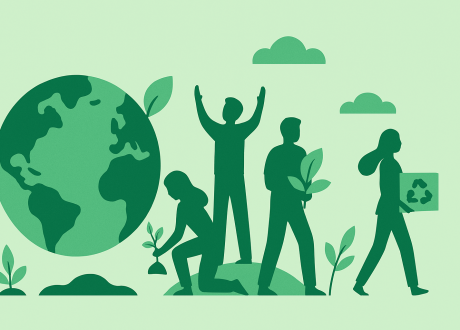
5 Steps to Build an Effective CSR Strategy
In today’s business landscape, Corporate Social Responsibility (CSR) has evolved from being a “nice-to-have” to ...

The World Meteorological Organization (WMO) hopes that the science included in the agency’s yearly Greenhouse Gas Bulletin , and the State of the Global Climate report to be published in the eve of the UN Climate Conference COP27 in Egypt, will help galvanize negotiators into more ambitious action to achieve the Paris Agreement goal to preferably limit global warming to 1.5 degree Celsius.
For WMO’s Secretary-General Petteri Taalas, the report highlights the importance to implement without delay the cost-effective strategies already available to tackle methane emissions, as well as to slash CO2 by transforming our industrial, energy and transport systems.
“The needed changes are economically affordable and technically possible. Time is running out,” he reiterated.
The agency’s yearly Greenhouse Gas Bulletin warns of the biggest year-on-year jump in methane concentrations in 2021 since systematic measurements began nearly 40 years ago.
While the reason for the unprecedented increase is still unclear, it seems to be a result of both biological and human-induced processes according to the report.
The increase in carbon dioxide levels from 2020 to 2021 was also larger than the average annual growth rate over the last decade, and according to WMO, the levels continue to rise through 2022.
“[The report] has underlined, once again, the enormous challenge – and the vital necessity – of urgent action to cut greenhouse gas emissions and prevent global temperatures from rising even further in the future,” said WMO Secretary-General Petteri Taalas.
The report explains that between 1990 and 2021, the warming effect on our climate (known as radiative forcing) by long-lived greenhouse gases (those that stay in the atmosphere) has risen by nearly 50 per cent, mainly fuelled by a CO2 increase.
To be more specific, CO2 concentrations last year reached 415.7 parts per million (ppm), methane 1908 ppm, and nitrous oxide 334.5 ppm. These values constitute, respectively, 149 per cent, 262 per cent and 124 per cent of pre-industrial levels before human activities started disrupting the natural balance of these gases in the atmosphere.
“The continuing rise in concentrations of the main heat-trapping gases, including the record acceleration in methane levels, shows that we are heading in the wrong direction,” Talas underscored.
WMO warns that as long as emissions continue, global temperature will continue to rise. Given the long life of CO2 in the atmosphere, the temperature level already observed will persist for decades even if emissions are rapidly reduced to net zero.
Scientists point out that it is also important to understand that this report is measuring the concentrations of greenhouse gases, meaning what remains in the atmosphere after gases are absorbed by sinks, like the ocean and biosphere, which are not the same as emissions.
اترك تعليقا